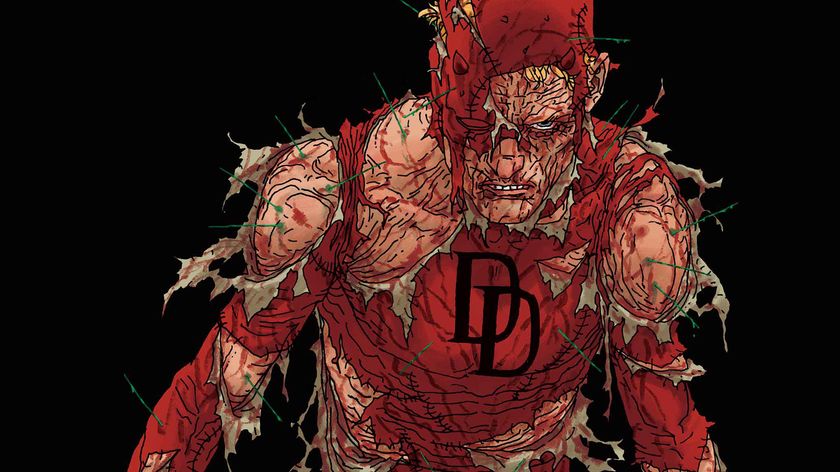Before Jaffe, Miyamoto, and Inafune hit it big, they made...

Started at the bottom, now they're here
You have to get your foot in the door somehow. The biggest names in the gaming industry didn't just wake up one morning to find that their opinions and designs were widely acclaimed and respected. It took work, luck, blood, sweat, tears, blood, tears, sweat, blood, and tears to get to where they are today. And though each may be best known for his or her work on a single game or series, every developer had to start somewhere.
So just where and when did these illustrious careers first start? We've combed through game credits to track down the first projects of these celebrated auteurs. Mind you, these aren't entire studios--just the big names that you recognize from headlines and interviews. It all goes to show that video games are very much a collaborative medium, and the smallest staff member can go on to make history (and big bucks) later down the line.

Cliff Bleszinski (Gears of War, Unreal Tournament)
Started with: The Palace of Deceit: The Dragon's Plight (PC), doing the game design and graphics.
Bleszinski's quite the self-starter, making and publishing this dungeon-crawling adventure all while he was a student. And contrary to popular belief, Jazz Jackrabbit wasn't his first Epic Games project; that honor belongs to the point-and-click Dare to Dream Volume One: In a Darkened Room.

John Carmack (Doom, Quake. Commander Keen)
Started with: Catacomb, as a programmer and designer.
Carmack knew the way to recognition even before he co-founded id Software. You know how to get people to remember who made a video game? Slap your byline at the bottom of the HUD's ever-present inventory screen.

Keiji Inafune (Mega Man, Dead Rising)
Started with: Street Fighter (arcade), as a graphic designer.
Are you a fan of the arrogant Muay Thai kickboxer Adon? You can thank Inafune for that, who created Adon from scratch the same year he first drew our favorite Blue Bomber.

Ed Boon (Mortal Kombat)
Started with: High Impact Football (arcade), as a programmer and designer.
This precursor to NFL Blitz pioneered a technique that would later make Boon famous: digitized sprites of real-life actors. Legend has it that the on-field players were modeled after Boon himself.

Yu Suzuki (Shenmue, Virtua Fighter)
Started with: Champion Boxer (arcade), as a designer.
The technology didn't exist in 1984, but in a perfect world, every round in this primitive boxing game would kick off with a ROLLLINNG STAAAAAAAAART!

Ted Price (Ratchet & Clank, Resistance)
Started with: Disruptor (PS1), leading the artwork and design.
The CEO of Insomniac Games didn't start with a smash hit. There's a good chance you might've missed this PS1 FPS, despite it being a respectable sci-fi shooter. And for your sake, we're glad you missed the disemboweled teddy bear used to advertise the game in Germany.

Ken Levine (BioShock, System Shock 2)
Started with: Thief: The Dark Project (PC), coming up with the initial design and story concepts.
OK, Ken Levine may be the only developer who worked on a critically acclaimed masterpiece right out the gate. Still, he had to rough it as a screenwriter before transitioning to games!

Satoru Iwata (Earthbound, Kirby's Dream Land)
Started with: Car Race II, developing everything himself.
Yep, what you're seeing above was made by the same dude who would be president of HAL Laboratory and Nintendo itself. It's unclear if that "II" is a representation of a road, because it seems there was never a Car Race I. Either way, this project was a clear demonstration of Iwata's programming prowess even during gaming's infancy.

Al Lowe (Leisure Suit Larry)
Started with: Dragon's Keep (Apple II), doing the programming himself and helping with the writing and graphics.
Just look at that screenshot. No offense to Lowe's early art skills, but that butt-chinned Garfield wanna-be makes us laugh harder than the entirety of Larry's sex-fueled escapades.

David Cage (Heavy Rain, Beyond: Two Souls)
Started with: Timecop (SNES), composing the music and sound.
No wonder Cage's games aspire to be interactive movies--he must've been starstruck by working on something featuring Jean Claude Van Damme back in 1995. Quite honestly, we can't blame him.

Todd Howard (The Elder Scrolls, Fallout 3)
Started with: The Terminator: Future Shock (DOS), as a producer and supplemental designer.
Howard was denied a job at Bethesda twice before his persistence finally got him hired. This Arnold-less FPS was his first project, with 3D-rendered environments that pre-dated Quake.

Hidetaka "Swery65" Suehiro (Deadly Premonition)
Started with: The Last Blade (Neo Geo), as a director.
When I found out SWERY had worked on this timeless samurai fighting game, my respect for the man soared beyond its already lofty heights. Play The Last Blade and its sequel, and I hope you'll see why.
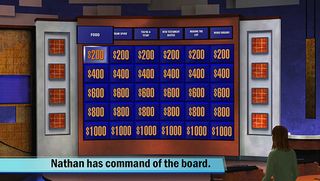
Jade Raymond (Assassin's Creed, Watch Dogs)
Started with: Jeopardy! (browser), as a programmer.
We'll take programmers-turned-industry-leading-executives for $1000, please.
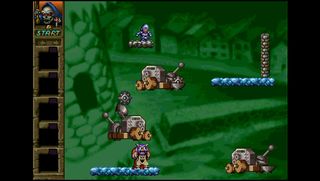
Hideki Kamiya (Devil May Cry, Bayonetta, Okami)
Started with: Arthur to Astaroth no Nazomakaimura: Incredible Toons (PS1), as a planner.
It's a commonly held belief (by the Internet) that Kamiya's first work was on this straightforward puzzler, which was essentially a Japanese port of The Incredible Machine's predecessor with Ghouls n' Ghosts branding. This is despite the fact that Resident Evil 2 released a few months prior.

Tomonubu Itagaki (Ninja Gaiden, Dead or Alive)
Started with: Tecmo Super Bowl 2: Special Edition (Genesis, SNES).
So far as we can tell, there are no known instances of ridiculous breast physics in this 16-bit gridiron game. This may seem shocking, given Itagaki's later works, but there you go.

Doug Tennapel (Earthworm Jim, The Neverhood)
Started with: Skljagger: Revolt of the Westicans (SNES), as an animator.
This crazily named pirate platformer had some awesomely insane box art to match the title. Tennapel also worked on such beloved 16-bit licensed games as Jurassic Park and Ren & Stimpy: Stimpy's Invention on Genesis.

Fumito Ueda (Ico, Shadow of the Colussus)
Started with: Enemy Zero (Saturn, PC), as an animator.
This FMV-heavy game was definitely different--moreso in a "bizarre sci-fi survival horror" kind of way than a "good" way. We much prefer it when Ueda takes the reins.

John Romero (Doom, Quake)
Started with: Dodge 'Em, doing all the game design, programming, art, and sound by himself.
There's no denying that Romero is a living legend. But something tells us that Dodge 'Em is still a better game than Daikatana. ZING!

David Jaffe (God of War, Twisted Metal)
Started with: Skyblazer (SNES), as a tester.
Yes, there's a softer side to the man who created Kratos and Sweet Tooth. And you thought Jaffe's first game was Mickey Mania! On an unrelated note, you should play Skyblazer--it's actually pretty great.
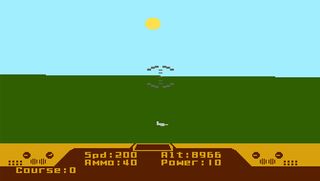
Sid Meier (Civilization, Pirates!)
Started with: Spitfire Ace (Atari), as a designer.
Sure, a World War II dogfighter (with then-impressive first-person flight) seems like a far cry from Meier's most famous works. But is there ever not a good time for shooting Nazi pilots of the sky?

Jonathan Blow (Braid, The Witness)
Started with: Wulfram (PC).
This concept might've been too ahead of its time: a multiplayer-only, team-based strategy game before that had been established as a thing. Turns out, getting a small studio's online-centric game off the ground was pretty damn challenging back in the '90s.
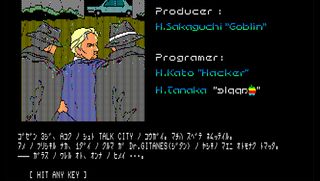
Hironobu Sakaguchi (Final Fantasy, Chrono Trigger)
Started with: The Death Trap (PC-88), as a producer.
Square's first game was also Sakaguchi's: a portentous adventure game about biological warfare. Sakaguchi also credited himself with the nickname "Goblin," despite not being a green-skinned mischief maker.
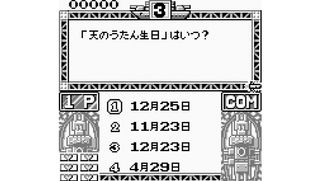
Shinji Mikami (Resident Evil, God Hand)
Started with: Capcom Quiz: Hatena? no Daibken (Game Boy), as game planner.
Mikami's first game let you test your knowledge on the go, if that's what you're into. And before he terrified us with the RE series, he made such kid-friendly 16-bit Disney classics as Aladdin and Goof Troop. The man's got range!

Edmund McMillen (Super Meat Boy, The Binding of Isaac)
Started with: Triptych (PC), as the sole artist.
Gish was McMillen's breakout hit, but he got his start with this simplistic puzzle game. It was essentially the precursor to Not Tetris, where the blocks' physics could be manipulated until the playfield was a jumbled mess.

Jane Jensen (Gabriel Knight, King's Quest)
Started with: EcoQuest: The Search for Cetus (DOS), as a writer and game designer.
Before penning digital murder mysteries and not one, but two Quest series, Jensen got her start on some good ol' fashioned edutainment. This particular example features fully voiced sea creatures, so we're immediately on board.

Warren Spector (Deux Ex, System Shock))
Started with: Space Rogue (Apple II, Commodore 64), providing supplemental writing and role-playing mechanics.
Before getting into video games and showing the world just how amazing RPG/FPS hybrids could be, Spector wrote about them in Space Gamer magazine and developed his own tabletop RPGs in his free time. If that doesn't get you a job interview, nothing will.

Hideo Kojima (Metal Gear Solid)
Started with: Penguin Adventure (MSX), as assistant director.
Kojima has legions of fans thanks to his creation of the Metal Gear series, which is still going strong. And is it just coincidence that Kojima's first job involved a male penguin, while his claim to fame stars a Solid Snake? Yes. Yes it is.
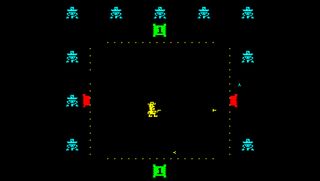
Shigeru Miyamoto (The Legend of Zelda, Super Mario Bros.)
Started with: Sheriff (arcade), as an artist.
Before he became Nintendo's Lead Genius Mastermind, Miyamoto worked on some very odd games. His early efforts saw him transitioning from games about cowboys to games about sailors--Popeye, to be exact.

Peter Molyneux (Fable, Black & White)
Started with: The Entrepreneur, but we're going to pretend it was the port of Druid 2: Enlightenment.
Molyneux's real first game was a business-sim text adventure that sold a measly two copies, so it's basically impossible for us to show it to you. What we can show you is this Gauntlet rip-off that gave Molyneux the programming chops that he would then utilize in creating his breakout hit, Populous.

Goichi Suda (Killer7, No More Heroes)
Started with: Super Fire Pro Wrestling 3 Final Bout, as director.
As far as we know, there aren't any of Suda51's trademarks--like mind-melting twists or psychedelic action sequences--in this fairly standard Super Famicom wrestler. But what it does have is a 16-bit rendition of Hulk Hogan, which automatically makes it great.

Phil Fish (Fez)
Started with: Open Season, as a level designer.
We imagine a guy like Phil wasn't feeling so intellectually stimulated by working on a tie-in game for a kid's movie. We highly doubt it involved mind-bending perspective puzzles, anyway.

Michel Ancel (Rayman, Beyond Good & Evil)
Started with: Pick 'n Pile (Atari 2600), working on graphics and design.
Of this simplistic puzzle game's many ports, the Apple II version is said to be the best. It might not show any hint of Ancel's creative (and often armless) character design, but it's certainly colorful.

Tim Schafer (Psychonauts, Grim Fandango)
Started with: Indiana Jones and the Last Crusade: The Action Game (DOS), as a tester.
We're guessing that being forced to test a platformer this crappy would make every other genre seem 100 times better. Thank goodness Schafer gravitated towards adventure games instead (a storied journey through game development which you can read all about right here).

Yasumi Matsuno (Final Fantasy Tactics, Vagrant Story)
Started with: Conquest of the Crystal Palace (NES), as a planner.
Matsuno cut his teeth on this charming little platformer, which has backgrounds so detailed as to be confuse the eyes. You may recall seeing the crazy purple ogre from the box art whilst browsing for your next NES rental.

Will Wright (SimCity, Spore)
Started with: Raid on Bungeling Bay (Commodore 64), doing everything himself besides the later NES and MSX ports.
Turns out, the mind behind mega-hits like SimCity and The Sims got his start with attack helicopters instead of construction. Wright so enjoyed building cities in Bungeling Bay's level editor that he decided to make a game out of it, researching urban planning and eventually making SimCity. Essentially, his game designs went from decimating cities in a chopper to building a metropolis--and human lives--from the ground up.

Jenova Chen (Journey, Flower)
Started with: Medal of Honor: European Assault (PS2, Xbox, GameCube), as an art intern.
Chen had to depict the horrors of war for the environmental art and level design of European Assault's Russian campaign. But you'd never know it, given that the modern games made by thatgamecompany so closely focus on tranquility and emotion.

The stuff of legends
So there you have it--the first games of some of gaming's most renowned names. It's crazy to see how far they've come, and we wonder whether or not they remember their first game fondly. Of course, there are always those whose first work was the biggest claim to fame--people like Randy Pitchford, who got his start on Duke Nukem 3D Atomic Edition, or Toru Iwatani and his debut of Puck-Man (aka Pac-Man). Think we missed your favorite big-name developer? Tell us in the comments and we'll track their first project down!
And if you're looking for more info on famed developers, check out 30 game devs you should know (and how to pretend you do) and Your favourite game developers... before they were famous.

Lucas Sullivan is the former US Managing Editor of GamesRadar+. Lucas spent seven years working for GR, starting as an Associate Editor in 2012 before climbing the ranks. He left us in 2019 to pursue a career path on the other side of the fence, joining 2K Games as a Global Content Manager. Lucas doesn't get to write about games like Borderlands and Mafia anymore, but he does get to help make and market them.
An earlier version of this article originally appeared on this site on October 17th, 2013.
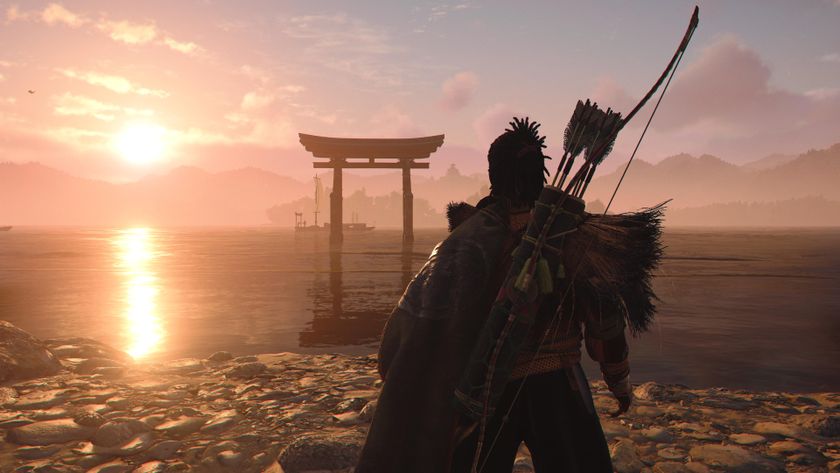
Assassin's Creed Shadows has an entire island stuffed with adorable kittens you need to check out, and it's based on an actual Japanese cat paradise

Assassin's Creed Shadows' generous parrying is a nightmare – and before anyone can say "skill issue," I'm blaming Sekiro and Lies of P




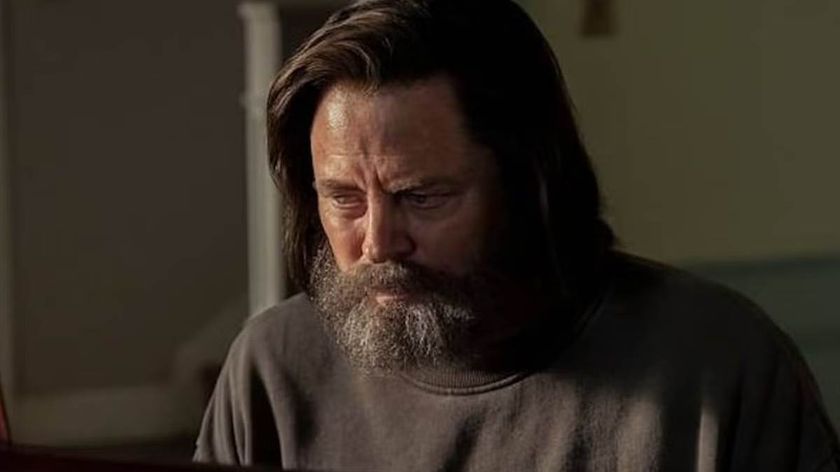




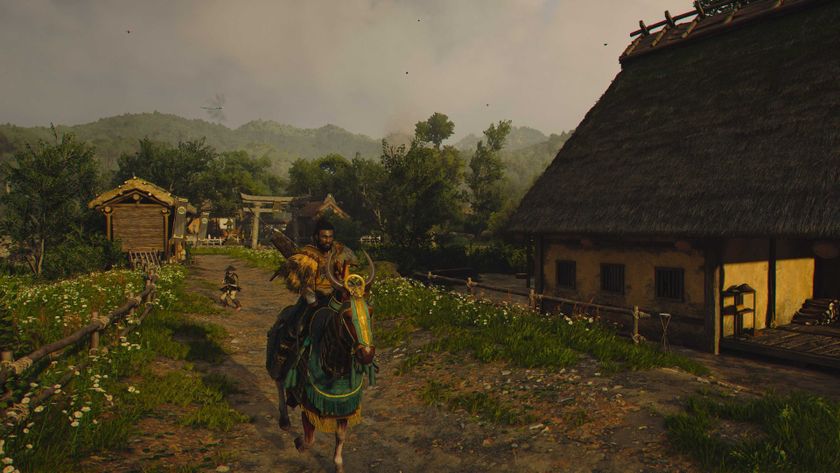
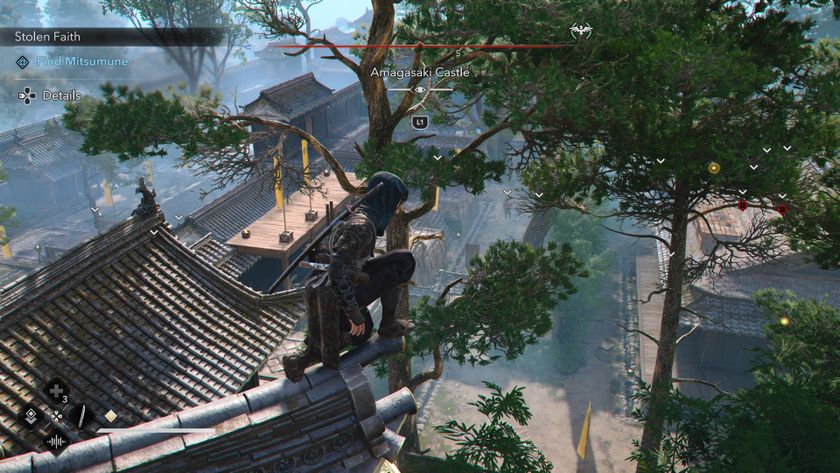


Assassin's Creed Shadows has an entire island stuffed with adorable kittens you need to check out, and it's based on an actual Japanese cat paradise

Assassin's Creed Shadows' generous parrying is a nightmare – and before anyone can say "skill issue," I'm blaming Sekiro and Lies of P





